February 22 2019. Enonkishu Conservancy, Kenya. One morning two of us were granted permission to spend a few hours birding around a small man-made lake in a rather private nearby reserve. We’d driven past without stopping a couple of times and could see that it held some promise. The lake was a safe enough place to visit during the day, it was contained around one third of its expanse by a walkable embankment dotted with acacia trees and was otherwise open and flat to the surrounding grasslands. At night the flat margins would be a different story, the soft muddy edges were well churned up by nightly visits from grazing hippos. They make their way here from another, much deeper, refuge lake a kilometer or so away. Everyone will tell you not get between a hippo and its route back to the safety of water, they spook easily, move fast and might well trample you in their mad dash. But it was daytime and for a couple of birders a quite extraordinary place, we turned up about thirty species, half of which we saw nowhere else in our weeks in Enonkishu.
Some of the highlights included three species of Lapwings: Blacksmith, Spur-winged and Wattled Lapwing. Lapwings are plovers in their own genus Vanellus, meaning ‘a little fan’ supposedly for the way their large wings beat the air. Lapwings are often alarmist-ly noisy day or night and are usually boldly patterned. In a way they are the show-offs of the plover family.
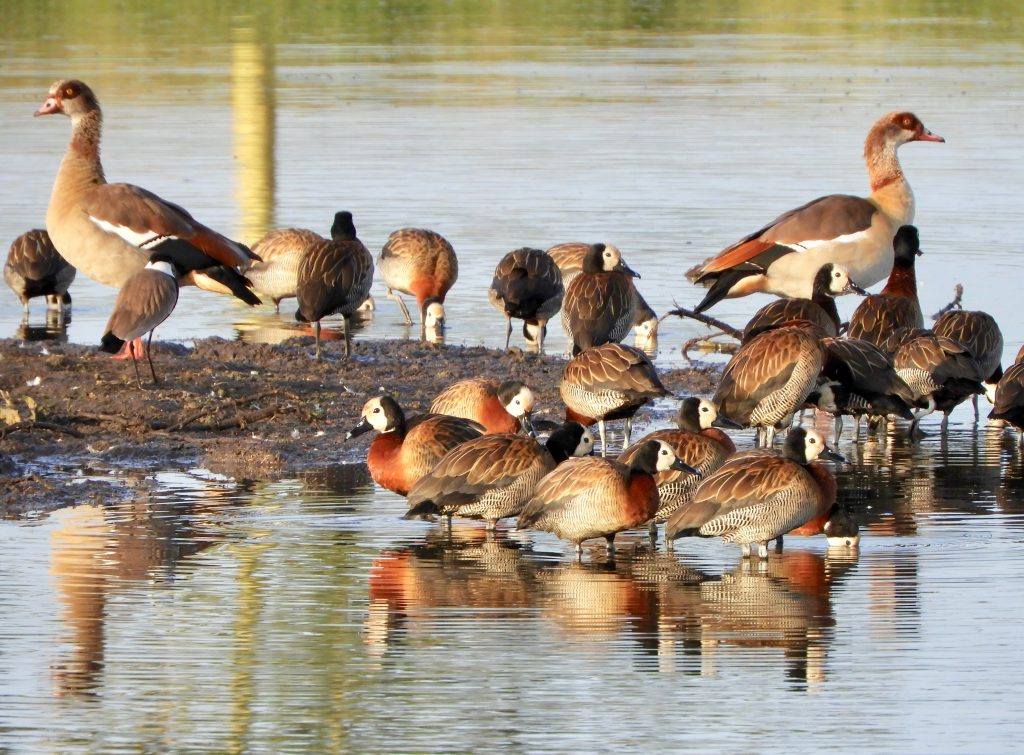
A crowd of Egyptian Geese and White-faced Whistling Ducks were puddling around the water’s edge and so captivatingly pretty that for a long time I didn’t notice other ducks, a pair of Red-billed Teal, minding their own business in a corner backwater.
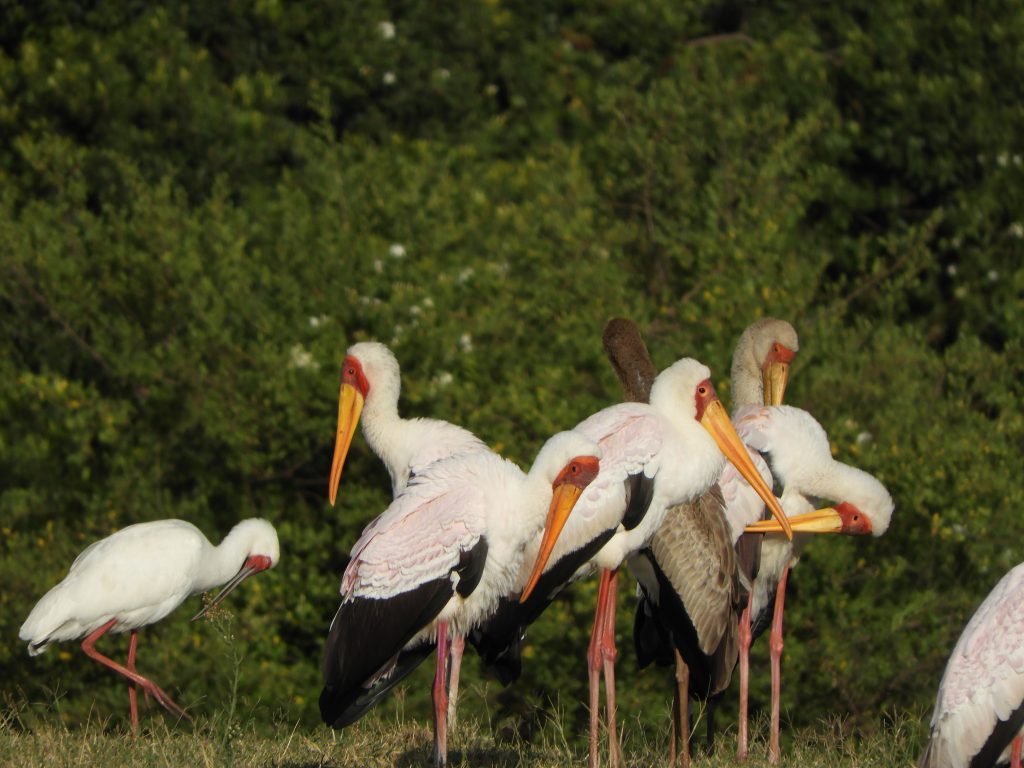
On the embankment overlooking the lake was a group of Yellow-billed Storks and hiding amongst them a single African Spoonbill. The storks are striking enough at any distance, but when you see them in good light (of which there’s plenty in Africa) you can see their backs and wing coverts have a pink blush. On the subject of long-legged birds, there were many Grey Crowned Cranes feeding in the open grassland around us, one of East Africa’s most spectacularly elegant birds.
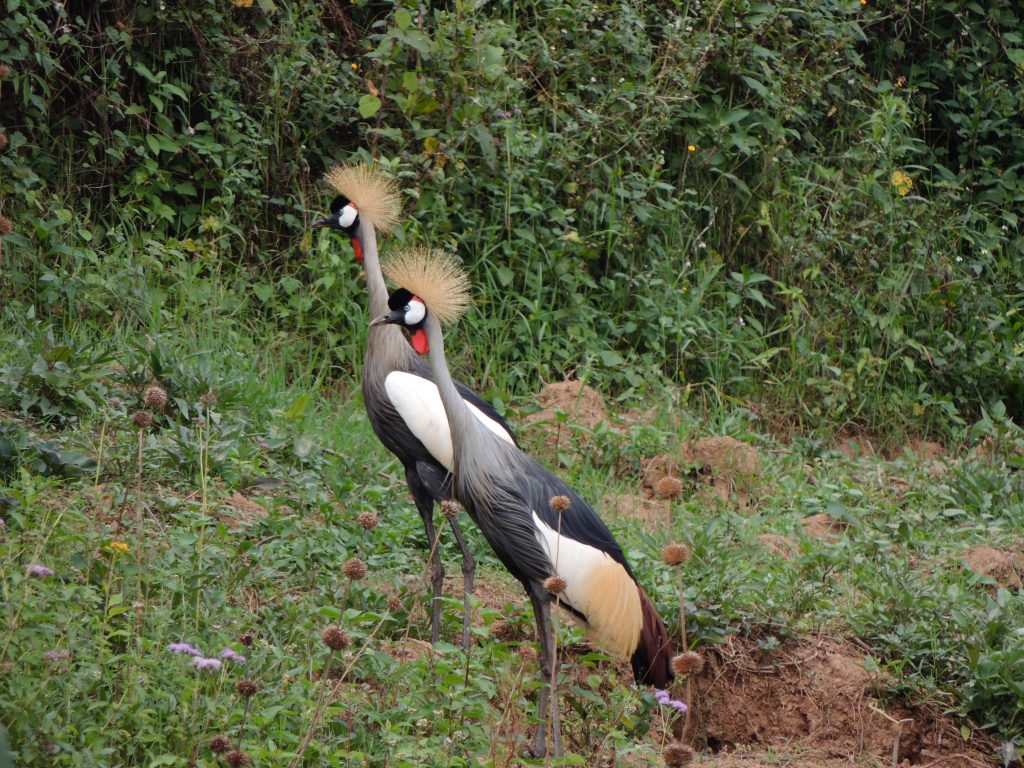
I watched a Lanner Falcon give chase to a small bird, the two apparently evenly matched with the same top speed, but in the end the hunted slipped into the cover of an open tree and outwitted the hunter. It was a thrilling match to watch, the Lanner is every bit as powerful as a Peregrine Falcon.
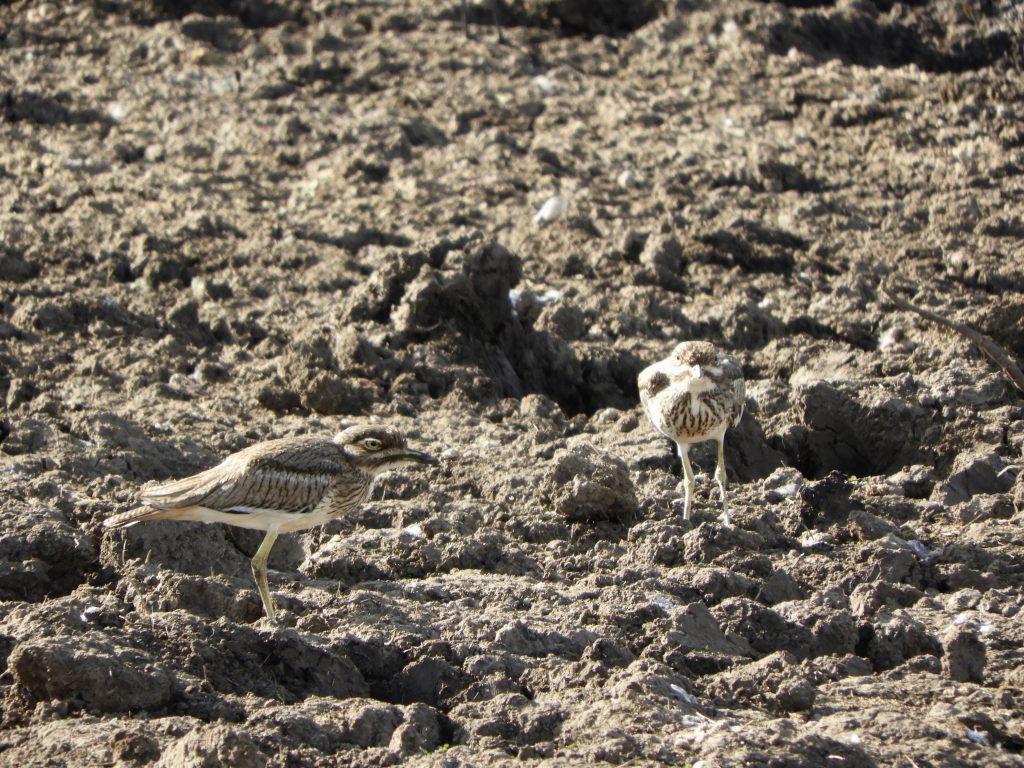
Most curious of all, and Bird of the Day, was a group of four or five Water Thick-knees. Thick-knees (which Google initially searched as a medical condition) belong in a family of birds sometimes called stone curlews, and sometimes dikops. They are curious to look at, kind of grumpy and bleary-eyed as if nursing a hangover, and unusual among waders or shorebirds in that they are noisily active at night and remain quietly hidden by day. Hiding in plain sight is their strategy, they stand still and rely on their cryptic colouring to save them, a technique that works well, as my photos confirm. There is a Eurasian member of the family, the Stone Curlew, which I have not seen but always hoped I would, so these Water Thick-knees were my first encounter with the family and something of a personal milestone; and for that were my Bird of the Day.
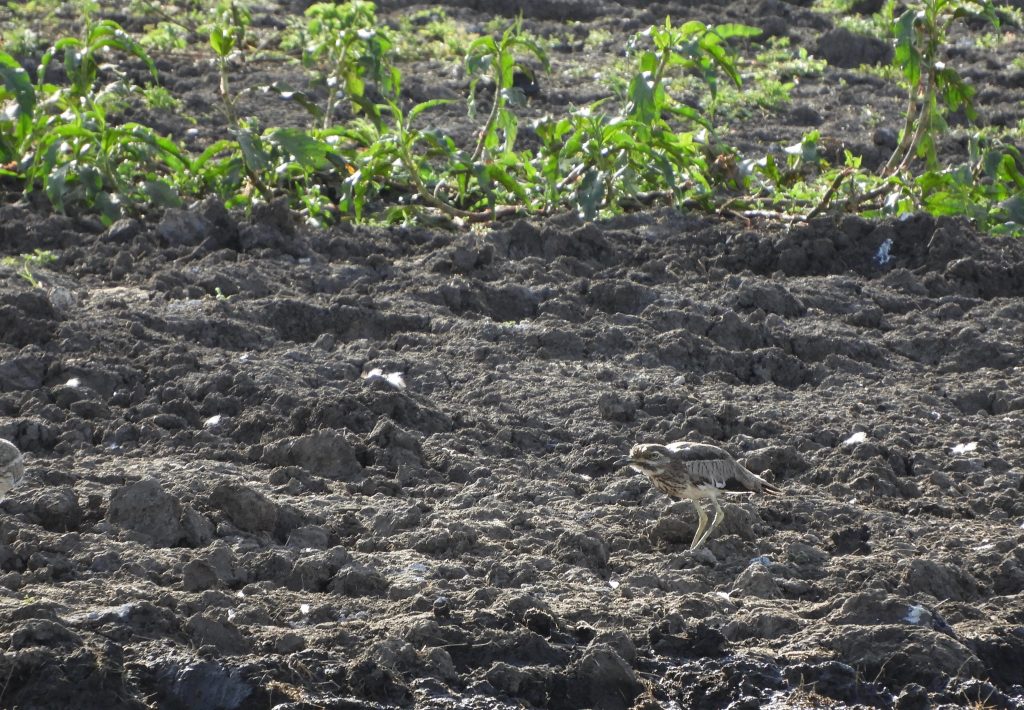
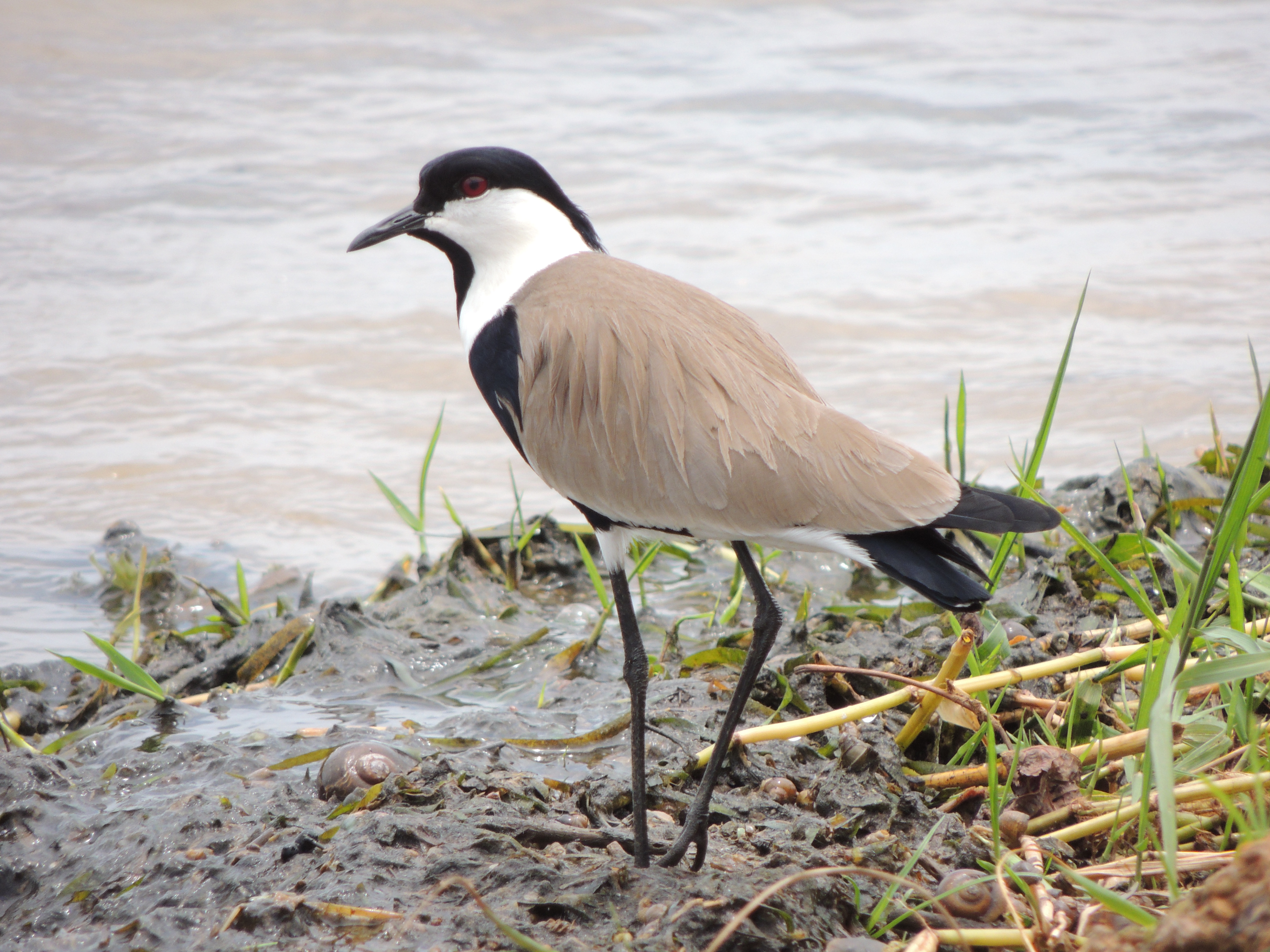
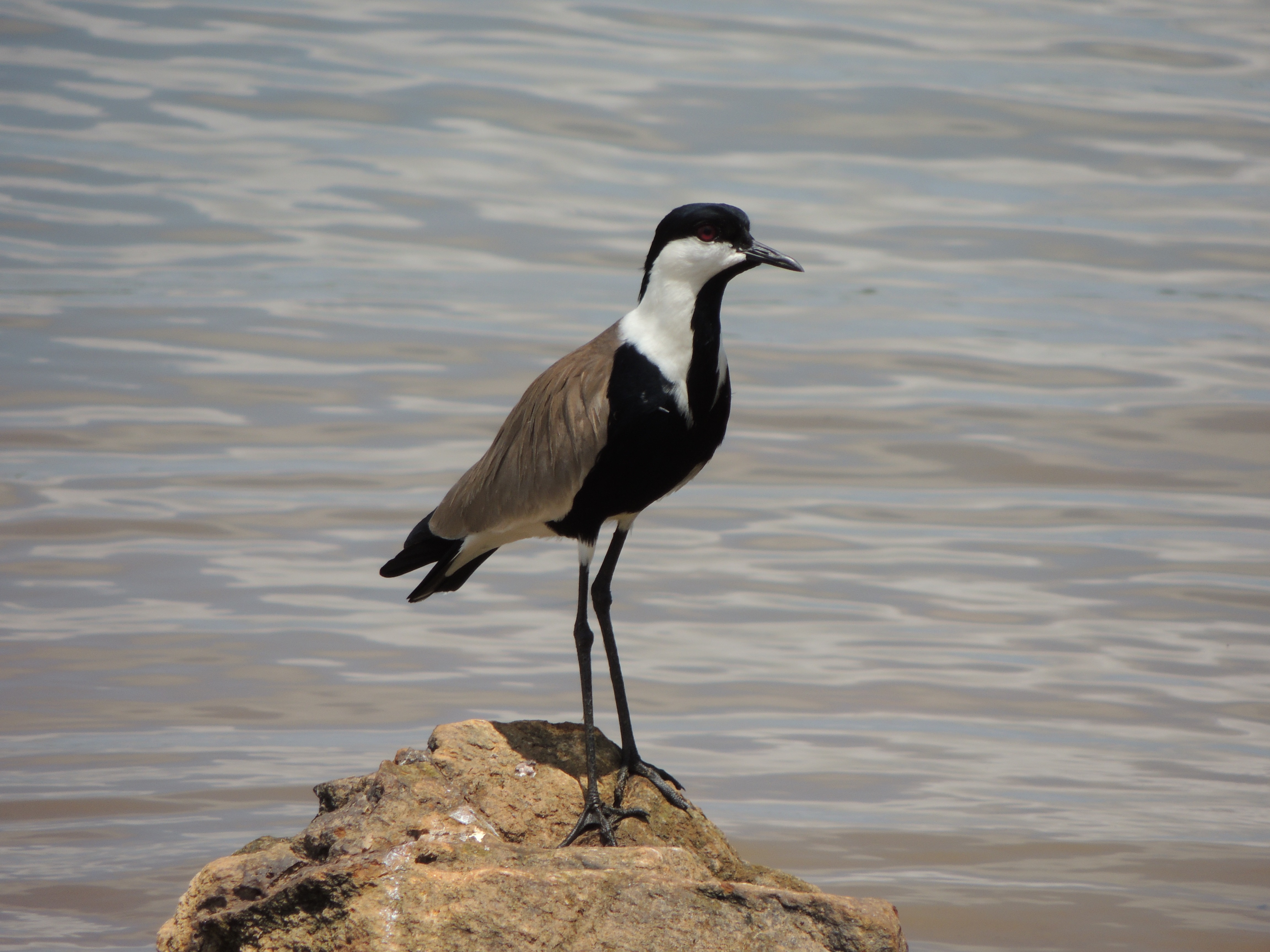
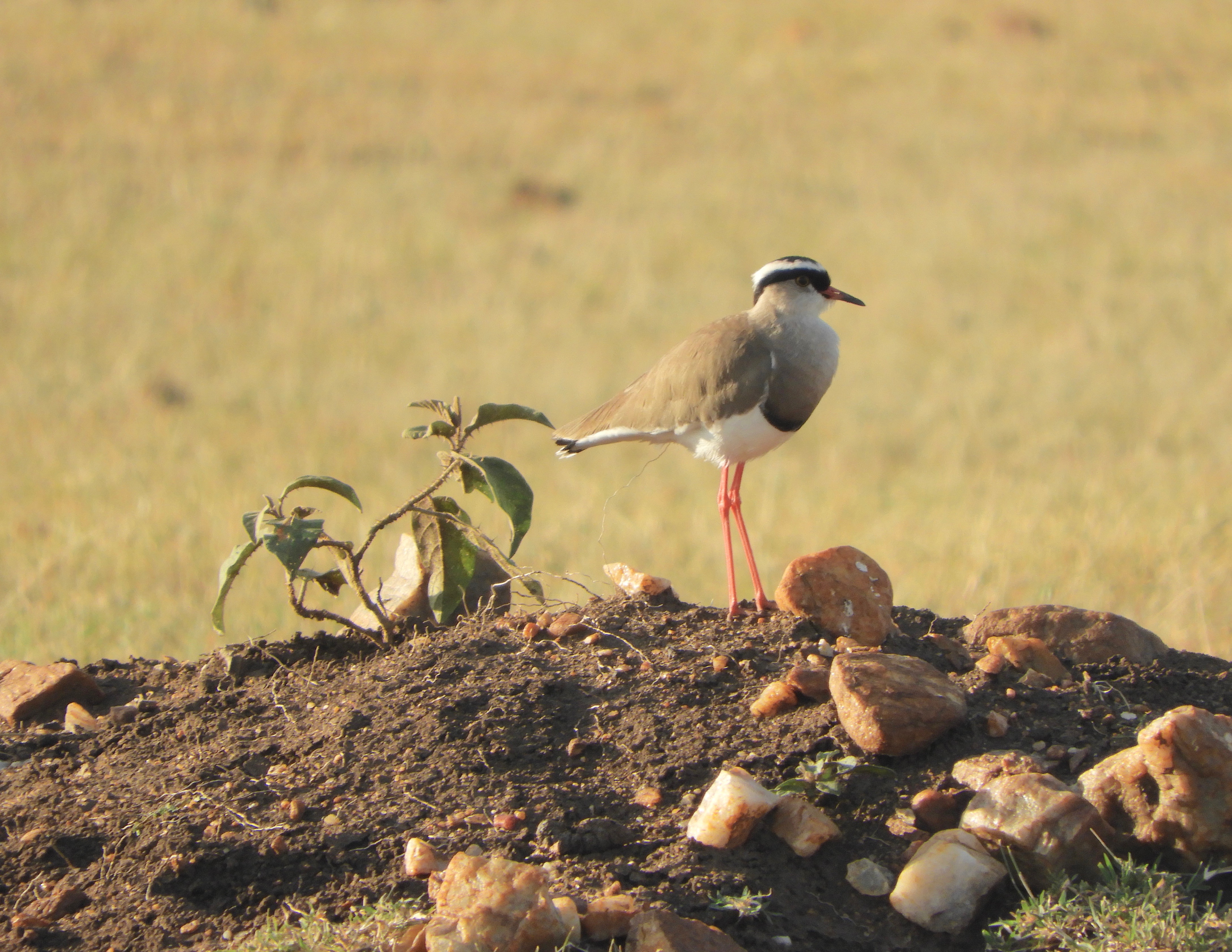
Thank you for the looks at and information about these beautiful birds.